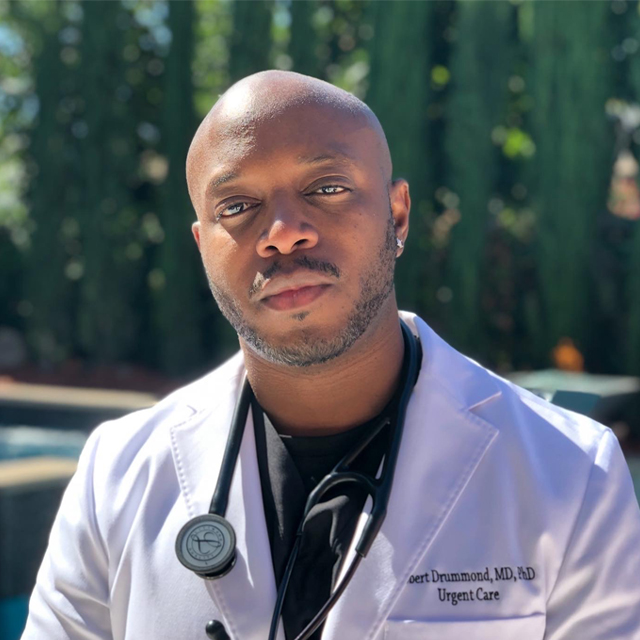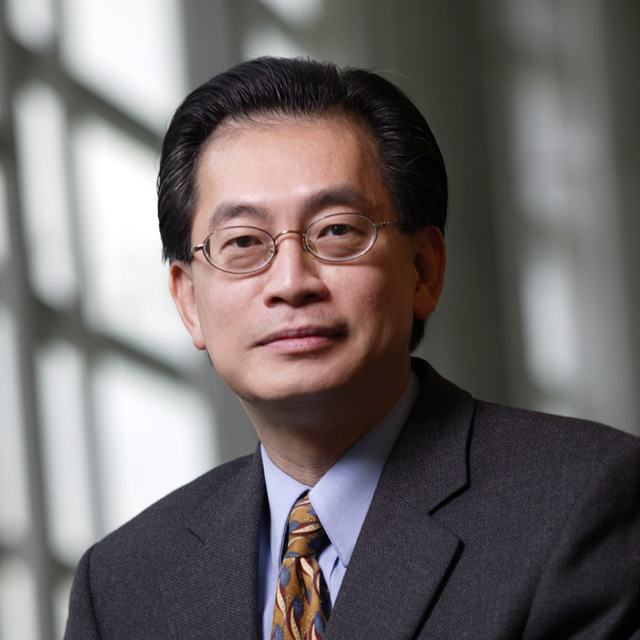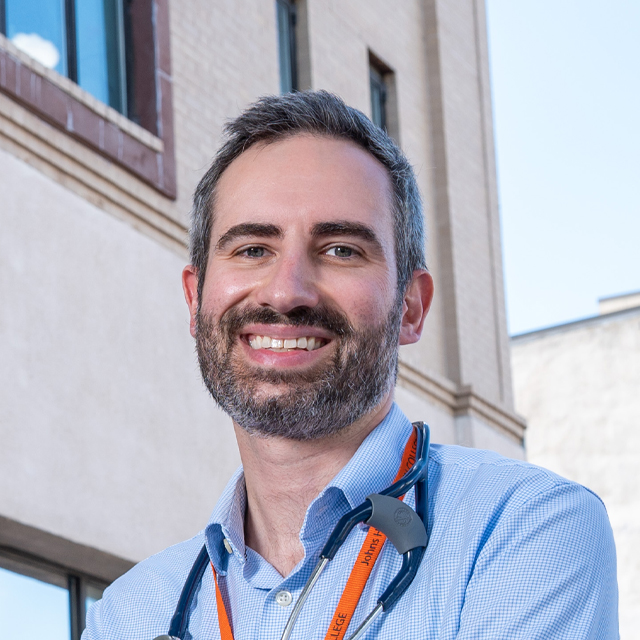As Johns Hopkins alumni blaze new trails through the world of medicine, sometimes their journey sees them emerge as leaders at their own alma mater.
“You come out of medical school having answered a lot of questions from the knowledge side, but you graduate with more questions than answers, and ultimately that’s what Johns Hopkins is about — we want to add knowledge to the world,” says Mohamad Allaf, M.D. ’00, who was named the Jakurski Family Director of the Brady Urological Institute, urologist-in-chief at The Johns Hopkins Hospital and director of the Department of Urology in spring 2022.
Allaf says Johns Hopkins students and educators were inspiring in a way that still motivates him now that he leads a department. “There’s this sort of curiosity people have because they not only take care of patients but also do research,” he says. “Hopkins gave us an incredibly well-rounded education and all the tools we needed to get into the world and make a difference.”
Andrew Cameron, M.D., Ph.D. ’98, director of the Johns Hopkins Department of Surgery and surgeon-in-chief of The Johns Hopkins Hospital, heartily agrees. He recalls the thrill of attending lectures and research labs with experts in their fields. “Most of us in medical school became enamored with the notion of physician-scientists,” he says. “I was taught creativity in the discovery mission. All of that was preparation for what still goes on.”
The Johns Hopkins University School of Medicine also was, and remains, focused heavily on the concept of service. It was no accident, Cameron notes, that Johns Hopkins was an international leader during the COVID-19 pandemic. “I think Hopkins medical school taught you that you are here for others,” he says.
Today, Cameron enjoys the opportunity to share those values with his own students. “I still teach medical students, and it’s the best hour of my week, every week,” he says. “They’re clever, talented, brilliant; they know everything and they know nothing. I can say I was you 30 years ago, and I sat where you sit, and this is what they taught me and what I would tell you. It’s a privilege and a thrill.”
There’s a similar intensity to being a student and being the head of a department, reflects Corinne Sandone,MA ’86, director of the Department of Art as Applied to Medicine. “My whole career has been stimulating and intense,” she says, “but the energy of being totally new as a student parallels the energy of being a director.”
Under Sandone, the department has added a new graduate program in clinical anaplastology — the only one of its kind in the U.S. — which involves creating custom prostheses to replace external body parts, such as eyes, noses and fingers. Johns Hopkins imbues students with a drive to excel that helps guide that kind of innovation, Sandone says. Looking back on her own student experience, she says: “I think there’s just an environment and expectation of everybody absolutely doing their best that definitely elevated the expectations of students in the program. It was incredibly exciting to see the variety of things people were doing.”
Amid the quest for success, the environment among Johns Hopkins medical students was never anything but supportive, the students-turned-directors agreed. Allaf recalls how Johns Hopkins welcomed him as an immigrant to the U.S., driven first from Lebanon by civil war and then Kuwait by the Iraq invasion.
“It’s not lost on me that Johns Hopkins took a chance on me and is a place where any individual of any background who works hard and is bright will do well,” he says. “Johns Hopkins embraces folks of all backgrounds in a very positive way and, for me, that made all the difference.”



